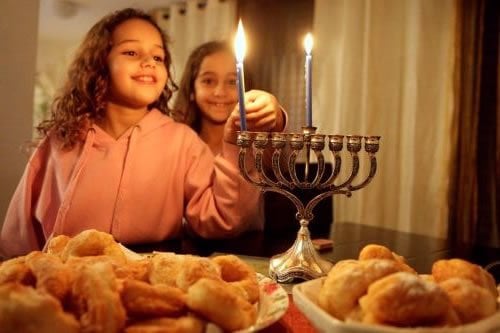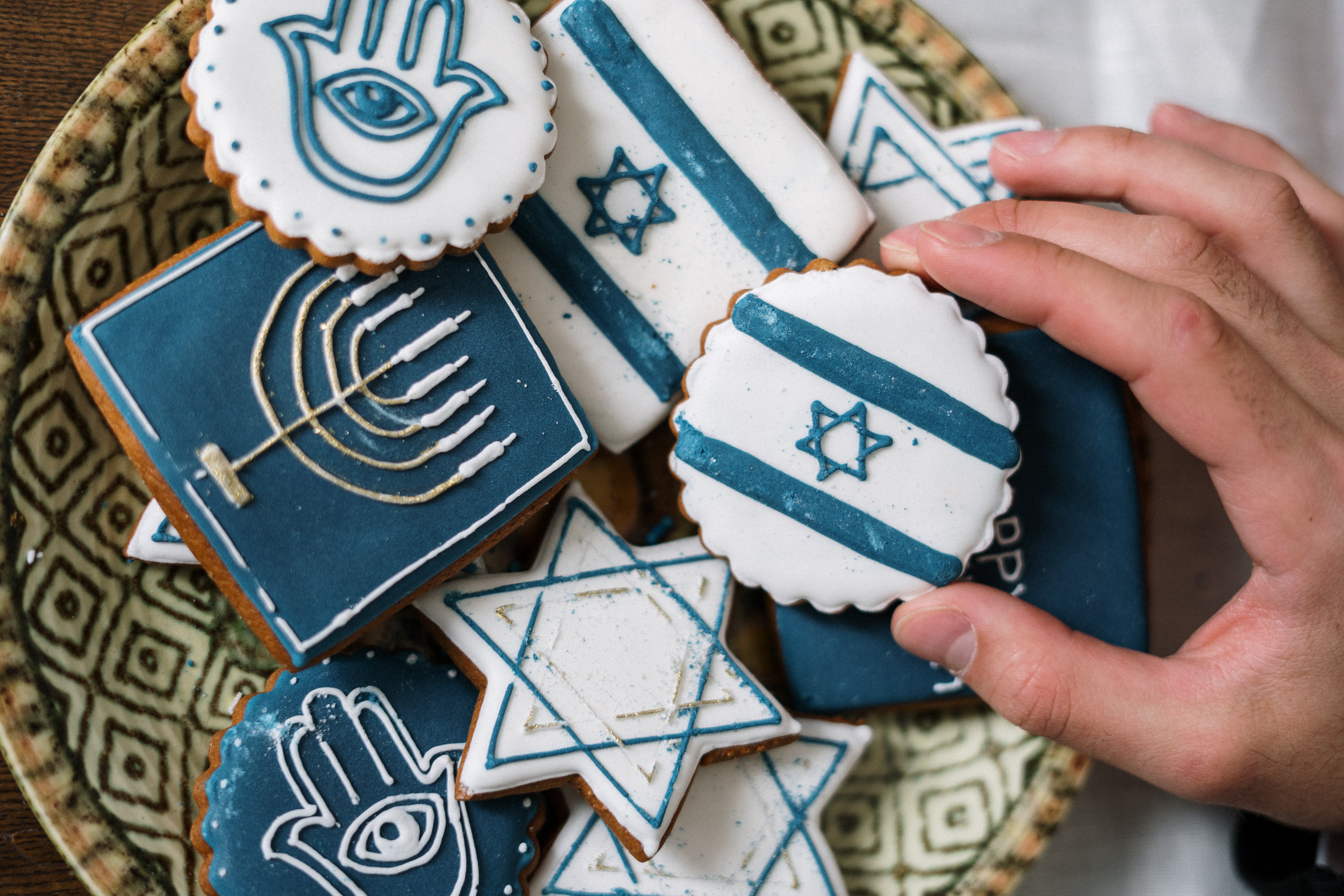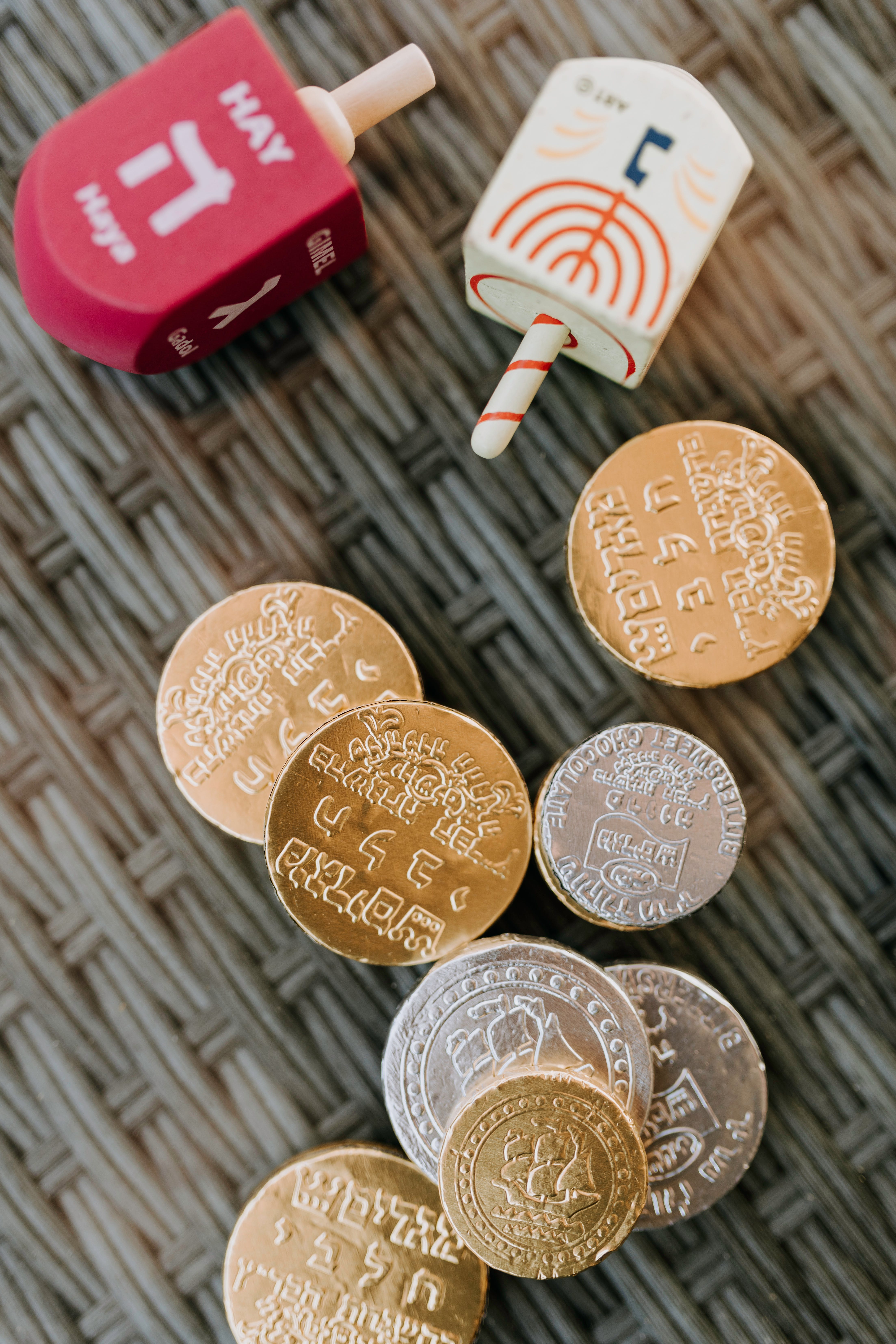Learn about Hanukkah and its significance

https://www.chabad.org/holidays/chanukah/article_cdo/aid/102911/jewish/What-Is-Hanukkah.htm
Hanukkah, also known as the festival of lights, holds great significance for the Jewish community. This eight-day celebration commemorates the rededication of the Holy Temple in Jerusalem during the second century BCE after it was desecrated by the occupying Seleucid forces.
The festival of lights is named as such because it revolves around the miracle of the oil. According to Jewish tradition, after the victorious Maccabees recaptured the Holy Temple, they found only a small amount of pure oil left, enough to light the menorah (a seven-branched candelabrum) for just one day. However, this oil miraculously burned for a full eight days, enabling the Jews to properly rededicate the Temple.
The significance of Hanukkah extends beyond the historical events. It represents the triumph of light over darkness, freedom over oppression, and the resilience of the Jewish people. During the eight days, Jewish households light the menorah, adding one candle for each night, until all eight candles, plus the central one known as the “shamash” or servant, are illuminated. This act symbolizes the spreading of light and hope in a world that often faces darkness.
Hanukkah is also a time for festive meals with family and friends, giving and receiving gifts, playing games with a spinning top called a dreidel, and savoring traditional foods like latkes (potato pancakes) and sufganiyot (jelly-filled doughnuts).
Through the celebration of Hanukkah, Jews worldwide affirm their commitment to their faith, commemorate their history, and embrace the enduring message of hope and light that has resonated for over two millennia.
What is the date of Chanukah?

Chanukah, also known as the Festival of Lights, is a significant holiday celebrated by Jewish communities worldwide. It commemorates the rededication of the Second Temple in Jerusalem and the miracle of the oil that lasted for eight days when there was only enough to burn for one day. This holiday is observed for eight nights and days, usually falling in late November to late December.
One of the central traditions of Chanukah is lighting the Chanukah menorah, also called a hanukkiah. Each night, one additional candle is lit, starting with the shamash, or the helper candle, and progressing to the other eight candles representing each night of the holiday. This ritual serves as a symbol of the miracle that occurred with the oil in the Temple.
Another beloved tradition during Chanukah is playing with the dreidel, a four-sided spinning top. The dreidel is decorated with Hebrew letters representing the phrase “A Great Miracle Happened There”. Children and adults alike enjoy playing a game of chance, taking turns spinning the dreidel and following the instructions dictated by the letter it lands on.
Fried foods also hold a special place during Chanukah, as they symbolize the miracle of the oil. Latkes, traditional potato pancakes, are fried in oil and served with applesauce or sour cream. Sufganiyot, or jelly-filled donuts, are also commonly enjoyed during this festive time.
Another aspect of Chanukah is the act of giving gifts. This tradition stems from the notion of giving and receiving during the holiday season. Families exchange presents, particularly for children, as a way to celebrate and spread joy during this special time.
Singing songs is another integral part of the Chanukah celebrations. Traditional melodies, such as “Ma’oz Tzur” and “Hanukkah, O Hanukkah”, are sung with friends and family to honor the holiday and create a joyful atmosphere.
Chanukah is a wonderful time to come together, light the menorah, play dreidel, savor delicious fried foods, exchange gifts, and sing songs. This festive holiday is a cherished time to celebrate the traditions and history of the Jewish faith.
The holiday of Chanukah celebrates a historical event.
Chanukah is a significant Jewish festival celebrated annually to commemorate a historical event of great importance to the Jewish people. The festival holds deep religious and cultural significance within the Jewish community.
Chanukah commemorates the victory of Judah the Maccabee and his small army against the powerful Seleucid Empire in the second century BCE. Under the oppressive rule of King Antiochus IV, the Jewish people were forbidden from practicing their religion. However, Judah the Maccabee and his warriors led a successful revolt that resulted in the rededication of the Second Temple in Jerusalem.
The miracle of the lasting oil is another pivotal aspect of Chanukah. When the Jews reclaimed the Second Temple, they found only a small amount of pure olive oil with which to light the menorah. Miraculously, the oil, which should have burned for only one day, lasted for eight days, hence the eight-day celebration of Chanukah.
Recognizing the significance of these events, the sages, or Jewish scholars, instituted the festival of Chanukah as a way to commemorate the miracles that occurred during this historical period. It serves as a reminder of the perseverance and faith of the Jewish people in the face of oppression and serves as a symbol of hope, dedication, and the power of miracles.
In conclusion, Chanukah is not only a time of celebration but also a significant reminder of the triumph of Judah the Maccabee, the miracle of the lasting oil, and the resilience of the Jewish people. This festival holds great historical and cultural importance within the Jewish community, reinforcing their faith, identity, and perseverance.
This is how Chanukah is observed.

Chanukah, also known as the Festival of Lights, is observed in several meaningful ways. The central ritual of Chanukah is the nightly lighting of the menorah. Each night of the holiday, an additional candle is added to the menorah until it is fully lit on the eighth night. This act symbolizes the miracle of the oil in the ancient Temple, which burned for eight days instead of just one.
During Chanukah, there are specific rules regarding the timing of lighting the menorah. The candles must be lit after nightfall but before midnight. However, on Friday nights before Shabbat, the candles are lit earlier to avoid any conflict with the Shabbat restrictions. For the rest of the year, the menorah is typically lit after sunset.
As the menorah is being kindled, special blessings are recited, including the traditional Chanukah blessings. These blessings express gratitude for the miracle and serve to sanctify the lighting ritual. Additionally, songs such as “Maoz Tzur” (Rock of Ages) and “Hanerot Halalu” (These Candles) are sung to uplift and commemorate the holiday’s significance.
Menorahs are traditionally placed in households, prominently displayed in windows or other visible areas to publicize the miracle. In public spaces, large menorahs are often erected, serving as a symbol of pride and the triumph of light over darkness.
Furthermore, special prayers are included in daily rituals during Chanukah. These prayers, such as Al Hanissim (For the Miracles) and Hallel (Praise), focus on praising and thanking God for the miraculous events that occurred during the holiday.
Overall, Chanukah is observed through the nightly menorah lighting, the careful timing of lighting before and after Shabbat, the recitation of special blessings and songs, the placement of menorahs in households and public spaces, and the inclusion of special prayers in daily rituals. These observances serve to commemorate the miracle of the oil and to celebrate the victory of the Maccabees over their oppressors.
Chanukah Foods

During Chanukah, several traditional foods hold significant meaning in the celebration. Two popular dishes are potato latkes and sufganiyot.
Potato latkes are made from grated potatoes mixed with onion, flour, and eggs, then fried until crispy. These golden pancakes are enjoyed with applesauce or sour cream. The significance of latkes lies in the oil they are fried in, symbolizing the miracle that occurred during the rededication of the Holy Temple. According to the story, when the Maccabees reclaimed the Temple from the Greeks, they found only enough oil to light the menorah for one night. Miraculously, the oil lasted for eight nights until more could be obtained, hence the importance of oil in the Chanukah celebration.
Sufganiyot are jelly-filled donuts, deep-fried until they are fluffy and golden. They are often dusted with powdered sugar and are a sweet treat enjoyed during Chanukah. These donuts also represent the significance of oil in the holiday, as they are fried like the latkes. Some believe that the round shape of sufganiyot symbolizes the cycle of life or the eternity of God.
Other customary dishes often enjoyed during Chanukah include gelt, which is chocolate coins given to children as gifts, and rugelach, a crescent-shaped pastry filled with various sweet fillings like cinnamon, nuts, or chocolate.
In summary, Chanukah foods such as potato latkes and sufganiyot play an integral role in the celebration. They serve as a delicious reminder of the miracle of the oil and the rededication of the Holy Temple.
The dreidel game is traditionally played during the holiday of Chanukah.

The dreidel game is a beloved tradition during the celebration of Chanukah, also known as the Festival of Lights. This simple yet significant game holds a historical connection to Jewish resistance that dates back centuries.
During the time of the Greek-Syrian occupation of ancient Israel, practicing Judaism was forbidden. Jewish children would gather secretly to study the Torah, but when Greek soldiers appeared, the children would quickly hide their scrolls and pretend to play with tops. This clever strategy allowed them to continue learning while avoiding persecution.
The dreidel game itself is quite simple. It consists of a four-sided spinning top, each side of which is imprinted with a Hebrew letter. The letters are nun, gimel, hey, and shin, standing for the phrase “Nes Gadol Haya Sham,” meaning “A great miracle happened there.”
Each letter has a corresponding value in the game. Nun represents no action and nothing is gained or lost. Gimel means the player takes all the coins or tokens in the pot. Hey signifies the player takes half of the pot. Shin indicates the player must put one coin or token into the pot.
To play, participants sit in a circle and take turns spinning the dreidel. Depending on the outcome, players may contribute or take from the central pot of coins or tokens. The game continues until one player has accumulated all the items or until a predetermined number of rounds have been completed.
The dreidel game is a cherished tradition that symbolizes the resilience of the Jewish people throughout history. By playing this game during Chanukah, we not only celebrate the miraculous events of the past but also honor the spirit of resistance and perseverance that continues to shape our community.
Chanukah Gelt
Chanukah gelt is a cherished tradition during the festival of Chanukah, holding great significance in Jewish culture. The term “gelt” refers to money or coins, which are often given to children during this festive time. This tradition serves a twofold purpose of rewarding positive behavior and promoting acts of charity.
The giving of Chanukah gelt to children dates back to the Middle Ages. It stemmed from the concept of “Hanerot Halalu,” which emphasizes the importance of spreading light and goodness. By rewarding children with gelt, parents, and elders sought to inspire positive behavior, such as studying diligently, performing good deeds, and exhibiting kindness towards others during the holiday season. The gelt serves as a motivator for children to strive for excellence and embodies the spirit of the holiday, fostering a sense of pride and accomplishment.
Additionally, Chanukah gelt also relates to the larger celebration of Chanukah, which commemorates the miracle of the oil lasting for eight days in the rededicated Temple of Jerusalem. The traditional game of dreidel often accompanies the gelt-giving tradition. The dreidel, a four-sided spinning top, contains Hebrew letters representing the phrase “Nes Gadol Haya Sham,” meaning “A great miracle happened there.” Children play with the dreidel, and when it lands on a specific letter, they receive or give gelt accordingly.
Furthermore, Chanukah gelt encourages acts of charity. Beyond rewarding children individually, gelt can also be given to charitable causes or used to teach the value of assisting others in need. This aspect emphasizes the importance of sharing blessings and fostering compassion within the community.
In summary, Chanukah gelt serves as a time-honored tradition with multiple layers of significance. It rewards positive behavior, promotes acts of charity, and adds joy to the celebration of Chanukah, contributing to the uplifting spirit of the holiday.
The significance of Hanukkah in modern times.
Hanukkah, a widely celebrated Jewish festival, carries immense modern significance and relays powerful messages to its observers. One of its central meanings lies in the importance of standing up for what is right. Hanukkah commemorates the Maccabees’ victory over the oppressive Greek-Seleucid regime and their fight for religious freedom. This serves as a reminder for individuals to stand up against injustice and tyranny in their own lives and communities.
Another vital message of Hanukkah is the idea of increasing goodness. The festival lasts for eight nights, during which one additional candle on the menorah is lit each night. This progressive act symbolizes the potential for individuals to continuously grow, learn, and become better versions of themselves, spreading kindness and positivity in the world.
Moreover, Hanukkah highlights the power of a little light. The tradition of kindling the menorah emphasizes the significance of even a small act of holiness and righteousness, as it can dispel darkness and bring hope. This teaches us that even our smallest deeds can have a significant impact on our surroundings.
Hanukkah also promotes taking action in the community. By engaging in acts of charity, visiting the sick, or participating in other forms of communal service, individuals are encouraged to make a positive difference in their communities and contribute to the well-being of others.
Lastly, Hanukkah signifies the importance of rededication. During the festival, Jews commemorate the rededication of the Second Temple in Jerusalem. This represents the act of renewing one’s commitment to uphold their values, principles, and faith, inspiring individuals to constantly reevaluate their beliefs and refocus their efforts on what truly matters.
In conclusion, Hanukkah’s modern significance revolves around its messages of standing up for what is right, increasing in goodness, recognizing the power of even a little light, taking action within the community, and embracing the concept of rededication. As individuals reflect on these messages, they can find inspiration to bring about positive change in their own lives and the world around them.
“How to Light the Menorah”.chabad.orgArchivedfrom the original on 5 June 2017. Retrieved 6 October 2018.
Anchor Text: “How to Light the Menorah”
External Link: https://www.chabad.org/holidays/chanukah/article_cdo/aid/103868/jewish/How-to-Light-the-Menorah.htm
Recommend0 recommendationsPublished in Opinion
Responses